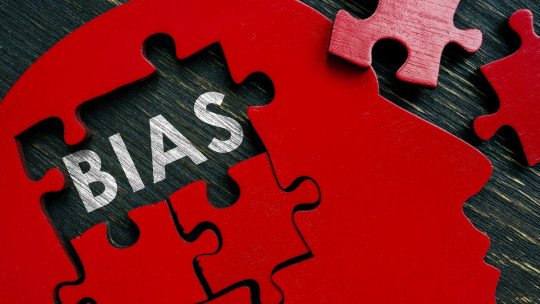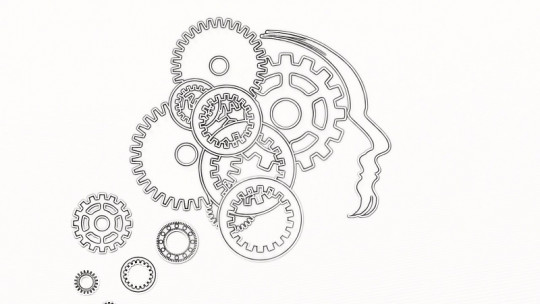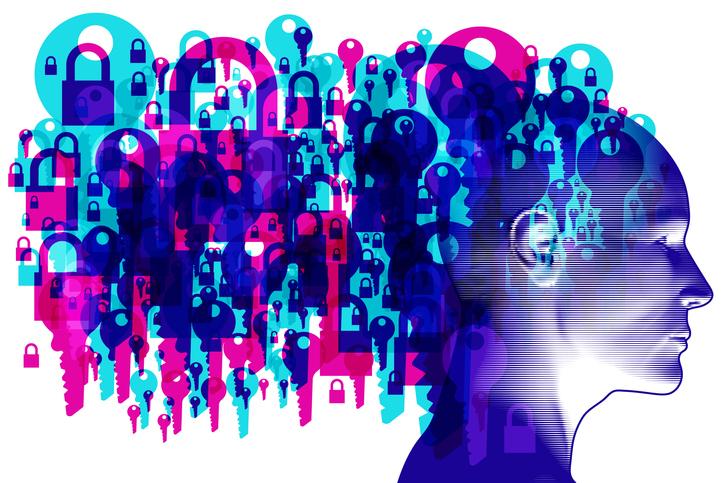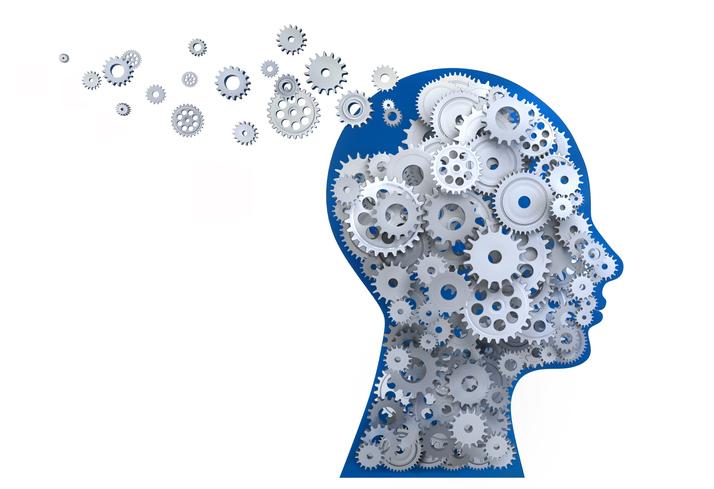You know that moment when you meet someone attractive and immediately assume they’re probably smart, funny, and morally upright too? Or when you discover your favorite company makes one terrible product and suddenly start questioning everything else they do? Welcome to the halo effect—one of the most pervasive and sneaky biases that shapes how we see the world, often without us having a clue it’s happening sneaky biases.
I’ve been studying cognitive biases for over fifteen years, and the halo effect might be the one that surprises people most when they really understand how it works. It’s not just about thinking good-looking people are smart (though that’s definitely part of it). This bias affects everything from how we evaluate job candidates and choose which products to buy, to how we judge entire countries based on one news story or decide which medical treatment sounds most promising affects everything.
The halo effect is basically your brain’s tendency to let one positive impression contaminate your judgment about completely unrelated qualities. If someone impresses you in one area, your brain automatically assumes they’re probably impressive in other areas too, even when there’s zero logical connection. It’s like your mind takes one data point and uses it to fill in a whole bunch of blanks, creating a glowing “halo” around the person or thing that makes everything else look better by association contaminate judgment.
What makes this bias particularly tricky is how reasonable it seems in the moment. Of course someone who’s successful in business probably makes good personal decisions too, right? Of course a company that makes great phones probably has excellent customer service as well, right? These connections feel so natural that we rarely stop to question whether they actually make sense. And that’s exactly when the halo effect does its most damage—when we’re not even aware it’s influencing our thinking feels natural.
The research on this is absolutely fascinating and more than a little disturbing. Studies show that teachers give better grades to essays when they think they’re written by attractive students. Judges hand out lighter sentences to defendants they find appealing. Investors pour money into companies run by charismatic CEOs, even when the fundamentals don’t support the hype. We’re not talking about conscious corruption here—these are well-meaning people whose judgment gets systematically skewed by irrelevant factors they don’t even notice systematically skewed.
How your brain creates these magical associations
The halo effect isn’t some character flaw or sign of shallow thinking—it’s actually a predictable result of how human brains evolved to process information quickly and efficiently. Back when our ancestors were living in small tribes, making rapid judgments about people based on limited information was often a matter of survival. If someone showed signs of being competent in one area, it was a reasonable bet they might be competent in others too rapid judgments.
Your brain is essentially a pattern-recognition machine that’s constantly looking for shortcuts to make sense of a complex world. When you encounter something new, your mind immediately starts searching for familiar categories and associations to help organize the information. This happens so fast and automatically that you’re usually not aware it’s happening pattern recognition.
Here’s where things get interesting from a neuroscience perspective. When you form a positive impression of someone or something, it activates reward centers in your brain that release feel-good chemicals like dopamine. These chemicals don’t just make you feel pleasant—they actually influence how you process subsequent information about that person or thing. Your brain becomes biased toward noticing and remembering information that confirms the positive impression while downplaying or forgetting information that contradicts it reward centers.
The visual system plays a huge role in halo effects, probably because so much of human social judgment happens through facial recognition and body language reading. Research shows that we form impressions about people’s competence, trustworthiness, and likability within milliseconds of seeing their faces. These instant judgments then color everything else we learn about them instant judgments.
What’s really wild is how specific and arbitrary these visual triggers can be. Studies have found that people with more “mature” facial features—like a prominent jaw or smaller eyes—are more likely to be perceived as leaders and given positions of authority. People who look like they’re smiling slightly, even in neutral photos, are rated as more trustworthy and intelligent. None of this has anything to do with actual leadership ability or intelligence, but it influences real-world decisions constantly arbitrary triggers.
The halo effect also gets amplified by something called the “confirmation bias feedback loop.” Once your brain decides someone or something is generally positive, it starts paying more attention to information that supports this view while filtering out contradictory evidence. This creates a self-reinforcing cycle where your initial impression keeps getting stronger, even if it was based on irrelevant factors to begin with feedback loop.
Social proof makes everything worse. When you see other people responding positively to someone, it reinforces your own halo effect. If everyone seems to think this CEO is brilliant, then they probably are, right? Except sometimes everyone is responding to the same superficial cues you are, creating collective delusions that can persist for years before reality catches up collective delusions.
Classic examples that’ll make you question everything
Let me tell you about a study that completely changed how I think about grading. Researchers gave college professors identical essays to grade, but they manipulated whether the professors thought the essays were written by students with traditionally “white” names versus traditionally “Black” names. Same exact essays, different names. The results were depressing but not surprising—essays supposedly written by white students received significantly higher grades depressing results.
This isn’t because these professors were consciously racist (most were probably well-meaning people who would be horrified to learn about this bias). It’s because the name triggered unconscious associations that created a halo effect. When professors expected higher quality work, they literally saw higher quality work, even in identical essays. They found more sophisticated arguments, overlooked more errors, and gave more generous interpretations to ambiguous passages literally saw.
The business world is absolutely riddled with halo effects, and some of the most expensive mistakes in corporate history can be traced back to this bias. Take Enron, for example. This company was celebrated as innovative and forward-thinking for years, winning awards and praise from business magazines. The halo around their reputation for innovation made people assume they were also ethical, well-managed, and financially sound. We all know how that turned out expensive mistakes.
Steve Jobs is probably the most famous example of someone who benefited enormously from halo effects. Don’t get me wrong—the guy was genuinely talented—but the halo around his reputation for design excellence made people assume he was brilliant at everything else too. When Apple succeeded, Jobs got credit for being a visionary leader, master strategist, and management genius. When Apple struggled in the 1990s, suddenly the same guy was seen as difficult, unfocused, and out of touch same guy.
Here’s a personal example that still makes me cringe. A few years ago, I was consulting with a tech startup whose CEO was incredibly charismatic and articulate. This guy could sell ice to penguins. He gave presentations that left everyone excited and impressed. Because he was so good at talking about the business, I assumed he was probably good at running it too. Big mistake. Turns out he was terrible with details, couldn’t manage people, and had no real understanding of the market. The company failed within two years big mistake.
Dating and relationships are halo effect minefields. Physical attractiveness creates such powerful halos that it influences judgments about personality, intelligence, moral character, and relationship potential in ways that have nothing to do with actual compatibility. I’ve had countless therapy clients who got involved with attractive partners who treated them poorly, but they kept making excuses because “he’s so smart” or “she’s so successful”—judgments that were really just extensions of the initial attractiveness halo halo minefields.
The medical field has its own version of this problem. Doctors who are confident and well-spoken often get halos that make patients assume they’re more competent clinically, even when their bedside manner has nothing to do with their diagnostic skills. Meanwhile, excellent doctors who are quiet or awkward might be undervalued because they don’t project the kind of confidence that triggers positive halos bedside manner.
Political candidates benefit from halo effects constantly. Someone who’s good at giving speeches gets credit for being a strong leader, even though public speaking and governance require completely different skill sets. Candidates who look “presidential”—whatever that means—get assumed to have better policies and more experience, even when their actual qualifications might be thin look presidential.
Why our brains are so susceptible to this bias
The halo effect exists because it actually works pretty well most of the time, which is why natural selection didn’t eliminate it from our mental toolkit. In small, stable communities where people knew each other well, someone who was competent in one area often was competent in others. If your tribal leader was good at hunting, they probably had other useful skills too. These correlations weren’t perfect, but they were better than random guessing works pretty well.
The problem is that modern life is full of situations where the old assumptions don’t hold up. We’re constantly encountering people we don’t know well, evaluating products we’ve never used, and making judgments based on extremely limited information. In these contexts, the halo effect becomes more of a bug than a feature, leading us astray more often than it helps modern life different.
There’s also an energy conservation aspect to this bias. Making careful, nuanced judgments about every person and situation you encounter would be mentally exhausting. Your brain has limited cognitive resources, and it needs to save energy for genuinely important decisions. Using halo effects as shortcuts allows you to make “good enough” judgments quickly, freeing up mental bandwidth for other tasks energy conservation.
Social learning plays a huge role too. We’re constantly watching how others respond to people and situations, and we use that information to calibrate our own judgments. If everyone seems impressed by someone, that’s evidence they’re probably impressive. If a product or company has a good reputation, that’s evidence they’re probably high quality. These social cues often override our own direct experience social cues override.
The emotional component can’t be ignored either. Positive halos just feel good. When you like someone or something, it’s pleasant to assume they’re wonderful in multiple ways. It creates a coherent, emotionally satisfying narrative that’s more appealing than a complex reality where people and things have both strengths and weaknesses emotionally satisfying.
Status and authority amplify halo effects in interesting ways. When someone has high status—whether through wealth, position, fame, or expertise—we’re more likely to give them the benefit of the doubt in other areas. A successful business executive must be smart about everything, right? A famous actor must have good taste and wise opinions, right? These assumptions often turn out to be completely wrong, but they feel reasonable in the moment status amplifies.
While halo effects might seem relatively harmless—so what if people make some overly generous assumptions?—they actually create serious problems in many areas of life. The costs are often hidden because we don’t realize our decisions are being influenced by irrelevant factors, so we don’t track the consequences properly hidden costs.
In hiring and promotion decisions, halo effects can systematically disadvantage qualified candidates who don’t fit certain superficial profiles. Research consistently shows that tall, attractive people with deep voices and firm handshakes are more likely to be hired and promoted, even for jobs where these characteristics have nothing to do with performance. Meanwhile, people who might be more qualified but don’t project the “right” image get overlooked systematically disadvantage.
Educational settings are particularly problematic because teacher expectations have such powerful effects on student performance. When teachers form positive impressions of certain students (often based on factors like appearance, parental involvement, or early performance), they unconsciously provide more encouragement, attention, and advanced opportunities to those students. This creates self-fulfilling prophecies where initial advantages compound over time self fulfilling prophecies.
Consumer decisions get systematically skewed by halo effects in ways that cost people real money. Companies spend millions on creating positive associations—attractive spokespeople, sleek design, impressive headquarters—that have nothing to do with product quality but create halos that justify premium pricing. People end up paying more for products that aren’t actually better, just because they’re surrounded by positive associations premium pricing.
Investment decisions are absolutely brutal when it comes to halo effects. Investors routinely pour money into companies with charismatic CEOs, impressive offices, or recent success stories, even when the fundamentals don’t support the valuations. The dot-com bubble and the 2008 financial crisis both involved massive halo effects where positive impressions in one area (innovation, growth, complexity) created assumptions about other areas (profitability, sustainability, risk management) that turned out to be completely wrong completely wrong.
Healthcare decisions can literally be life-and-death matters, but they’re still influenced by halo effects. Patients often choose doctors based on factors like office decor, personality, or reputation rather than actual clinical outcomes. Meanwhile, treatment options that sound sophisticated or come from prestigious institutions get halos that make them seem more effective than they actually are life and death.
The justice system isn’t immune either. Research shows that attractive defendants get lighter sentences, well-dressed defendants are more likely to be believed, and defendants who can afford expensive lawyers are assumed to be less likely to be guilty, even when controlling for other factors. These biases can literally determine whether someone goes to prison or walks free literally determine.
How it warps decision-making in specific domains
Let’s talk about online reviews and ratings, because this is where halo effects run absolutely wild in the digital age. When you see that a restaurant has five stars, what happens in your brain? You don’t just think “the food is probably good”—you start assuming the service is probably great, the atmosphere is probably nice, the prices are probably reasonable, and the location is probably convenient. One overall rating creates a halo that influences your expectations about every aspect of the experience every aspect.
The same thing happens with products on Amazon or other e-commerce sites. A product with lots of positive reviews gets a halo that makes people assume it’s high quality, durable, good value, and backed by excellent customer service. But here’s the thing—many of those reviews might be based on completely different criteria than what you care about. Someone might give five stars because shipping was fast, while you care about build quality. The halo makes you think all aspects are excellent when that might not be true different criteria.
Social media has created entirely new categories of halo effects. Someone with lots of followers must be important, right? Someone whose posts get lots of likes must be wise or funny or attractive, right? These metrics become halos that influence how we perceive everything else about that person. I’ve seen people make business decisions, dating choices, and friendship decisions based on social media halos that had nothing to do with the actual qualities that mattered for those relationships social media halos.
Brand loyalty is essentially institutionalized halo effect. When you love Apple products, you’re more likely to assume their new releases will be great before you’ve even tried them. When you have a bad experience with one product from a company, you’re more likely to assume all their other products are probably subpar too. These associations can override your actual experience with specific products override experience.
The news media creates and reinforces halo effects constantly. When a politician is having a good news cycle, suddenly their old policies seem smarter and their past decisions seem more prescient. When they’re having a bad news cycle, the same policies and decisions get framed as evidence of poor judgment. The actual policies haven’t changed, but the halo around the person colors how everything gets interpreted colors interpretation.
Academic and professional credentials create powerful halos in knowledge-based fields. Someone with a PhD from Harvard must be really smart, right? Someone who works at Google must be a great technologist, right? These credentials can be genuine indicators of ability, but they also create halos that make people assume expertise extends into areas where it might not apply. I’ve seen brilliant researchers give terrible business advice and skilled technologists make awful investment decisions, but their professional halos made people take their opinions seriously anyway terrible advice.
Strategies for recognizing when you’re under the influence
The first step in dealing with halo effects is developing what I call “halo awareness”—the ability to notice when your impressions of someone or something might be contaminated by irrelevant positive associations. This is harder than it sounds because halo effects feel so natural and reasonable when they’re happening halo awareness.
One technique I teach people is the “compartmentalization check.” When you find yourself making assumptions about someone’s abilities or qualities, pause and ask yourself: “What specific evidence do I have for this particular judgment, and what evidence am I just assuming based on other positive impressions?” For example, if you think someone would be a good business partner because they’re successful in their current field, ask yourself what specific evidence you have that their skills would transfer to your industry compartmentalization check.
The “devil’s advocate” exercise can be really helpful too. When you’re feeling positively about someone or something, deliberately try to think of reasons why your impression might be wrong. What negative information might you be overlooking or minimizing? What are the specific ways this person or product or company might disappoint you? This mental exercise helps counteract the natural tendency to focus only on confirming evidence devils advocate.
Pay special attention to first impressions and early information, because these have disproportionate power to create halo effects. If someone makes a great first impression, be extra careful about whether subsequent positive judgments are based on new evidence or just extensions of that initial halo. Similarly, if your first experience with a product or service is positive, don’t assume all future experiences will be the same first impressions.
Look for specific, concrete evidence rather than general impressions. Instead of thinking “this person seems really competent,” ask yourself “what specific competencies have I actually observed, and in what contexts?” Instead of “this company has a great reputation,” ask “what specific aspects of their performance are actually excellent, and what’s just general goodwill?” concrete evidence.
Seek out diverse perspectives and information sources. Halo effects are often reinforced by echo chambers where everyone shares the same positive or negative impressions. Actively looking for different viewpoints can help you identify when your judgments might be skewed by groupthink or social proof rather than actual evidence diverse perspectives.
Create systematic evaluation criteria before you need to make important decisions. If you’re hiring someone, decide in advance what qualities are actually necessary for the job and how you’ll evaluate each one independently. If you’re choosing a contractor, decide what factors matter most to you and how you’ll assess each one separately from your overall impression systematic criteria.
Breaking free from the halo trap in high-stakes situations
When the stakes are high—hiring decisions, major purchases, investment choices, relationship commitments—it’s worth investing extra effort to counteract halo effects systematically. The key is creating structured processes that force you to evaluate different aspects independently rather than letting one positive impression contaminate everything else structured processes.
For hiring decisions, use what’s called “structured interviewing” where you evaluate specific competencies separately. Instead of just having a general conversation and forming an overall impression, create specific questions designed to assess particular skills or qualities. Score each competency independently before forming any overall judgment. This prevents someone who interviews well from getting credit for technical skills they haven’t actually demonstrated structured interviewing.
When making major purchases, resist the urge to make quick decisions based on overall impressions. Instead, create a checklist of the specific features and qualities that matter to you, and evaluate each one separately. Don’t let positive impressions in one area (like sleek design or friendly salespeople) influence your assessment of unrelated factors (like reliability or value for money) specific features.
For investment decisions, focus relentlessly on fundamentals rather than narratives. Companies and investment opportunities often come wrapped in compelling stories that create powerful halos, but these stories might have nothing to do with actual financial performance. Strip away the storytelling and look at hard numbers: revenue growth, profit margins, debt levels, competitive advantages. Make your investment thesis based on facts, not feelings hard numbers.
In relationship decisions, both personal and professional, try to evaluate different aspects of compatibility independently. Someone might be incredibly attractive or charming, but that doesn’t tell you anything about their reliability, emotional maturity, or shared values. Create space between your initial attraction and your long-term assessment of relationship potential different aspects.
Use what researchers call “consider the opposite” thinking. When you’re leaning toward a positive decision about someone or something, spend some time actively considering reasons why it might be a bad choice. What could go wrong? What red flags might you be overlooking? What alternative options might be better? This mental exercise helps counteract the natural tendency to only seek confirming evidence consider opposite.
Get input from people who don’t share your halo. If you’re excited about a potential hire, ask colleagues who haven’t met the person to review their resume and portfolio independently. If you’re considering a major purchase, ask friends who aren’t caught up in your enthusiasm to help you evaluate the decision objectively. Outside perspectives can often spot halo effects that you can’t see from inside them outside perspectives.
Teaching others to spot and avoid halo effects
If you’re in a position to influence other people’s decision-making—as a manager, parent, teacher, or consultant—helping them recognize halo effects can dramatically improve the quality of their choices. The challenge is that people often resist the idea that their judgments are being influenced by irrelevant factors. Nobody likes to think they’re being superficial or irrational resist the idea.
Start with low-stakes examples that clearly demonstrate how halo effects work. There are lots of fun exercises and optical illusions that show how context influences perception. You can also use examples from popular culture or history where halo effects led to obviously bad decisions. These demonstrations are less threatening than pointing out bias in someone’s actual decisions low stakes examples.
Model systematic evaluation processes in group settings. When your team is evaluating candidates, products, or strategies, explicitly separate different evaluation criteria and discuss each one independently. Show people how to gather specific evidence for each factor rather than relying on general impressions. This normalizes careful analysis and makes it safe for others to question their intuitive judgments model systematic.
Create decision-making frameworks that build in halo resistance. For example, you might establish a rule that no hiring decision gets made based on a single interview, or that major purchases require evaluation by multiple people who assess different criteria independently. These structural safeguards help counteract individual biases structural safeguards.
Encourage “red team” thinking where someone’s explicit job is to challenge positive impressions and look for potential problems. This shouldn’t be a permanently antagonistic role, but rather a rotating responsibility where different team members take turns playing devil’s advocate. This helps groups avoid collective halo effects where everyone gets caught up in the same positive impressions red team thinking.
Use post-decision reviews to identify when halo effects might have influenced important choices. After hiring someone who doesn’t work out, or investing in something that fails, spend time analyzing what initial impressions might have skewed the decision-making process. This retrospective learning helps people become more aware of their own patterns and biases retrospective learning.
The positive side and when halos can actually help
Before we completely demonize halo effects, it’s worth acknowledging that they’re not always problematic. In some situations, positive halos can actually be helpful or even necessary for effective functioning. The key is learning to distinguish between helpful halos based on relevant information and problematic halos based on irrelevant associations helpful halos.
In relationship building, both personal and professional, some degree of positive assumption can be beneficial. When you give people the benefit of the doubt and assume good intentions, it often brings out their best behavior and creates positive feedback loops. Obviously this can go too far, but starting with charitable assumptions about others can facilitate trust and collaboration in ways that pure skepticism might not charitable assumptions.
Leadership effectiveness often depends on followers having positive impressions that extend beyond specific demonstrated competencies. A leader who inspires confidence and optimism can motivate teams to achieve things they wouldn’t attempt under someone who was equally skilled but less inspiring. The halo effect around charismatic leaders can become self-fulfilling when it encourages higher performance from everyone involved leadership effectiveness.
Brand loyalty, while sometimes irrational, can actually simplify decision-making in positive ways. If you’ve had consistently good experiences with a particular company or product line, it’s reasonable to let that positive track record influence your expectations about new offerings. This saves time and mental energy compared to researching every single purchase from scratch simplify decisions.
In creative fields, positive halos can help artists, writers, and innovators get the support and resources they need to do their best work. Someone who has produced excellent work in the past deserves some benefit of the doubt about future projects, even if the specific details are still unclear. This kind of halo effect can enable risk-taking and experimentation that leads to breakthrough achievements enable risk taking.
The key to beneficial halo effects is conscious awareness and appropriate calibration. When you’re giving someone the benefit of the doubt, acknowledge that you’re doing it and be prepared to adjust your assessment based on new evidence. Use halos as starting points for evaluation rather than final conclusions, and remain open to both positive and negative surprises conscious awareness.
Moving forward with clearer vision
The goal isn’t to eliminate halo effects entirely—that’s probably impossible and might not even be desirable. Instead, the goal is to become more conscious about when and how these biases influence your thinking, so you can make better decisions in situations where accuracy really matters more conscious.
Start paying attention to your own patterns. What kinds of positive impressions tend to create the strongest halos for you? Are you particularly susceptible to physical attractiveness, professional credentials, social status, confident communication, or something else? Understanding your personal triggers can help you be more careful in situations where those factors are present but irrelevant personal triggers.
Practice separating different types of judgments and evaluating each one independently. Just because someone is good at one thing doesn’t mean they’re good at everything. Just because you like one aspect of a product or service doesn’t mean all aspects are equally good. This kind of analytical thinking feels unnatural at first, but it becomes easier with practice analytical thinking.
Build diverse networks and seek out different perspectives, especially when making important decisions. Surround yourself with people who think differently, come from different backgrounds, and aren’t afraid to challenge your assumptions. This helps counteract the echo chamber effects that can amplify halo biases diverse networks.
Remember that being wrong about halos is normal and human. Everyone falls for these biases sometimes, including people who study them professionally. The key is learning from mistakes and getting better at recognizing when your judgment might be skewed by irrelevant factors being wrong normal.
Most importantly, stay curious and humble about your own decision-making processes. The moment you think you’re immune to cognitive biases is probably the moment you’re most vulnerable to them. Maintaining a healthy skepticism about your own judgments—not paralyzing self-doubt, but appropriate humility—is one of the best defenses against halo effects and other systematic errors in thinking healthy skepticism.
FAQs about Halo Effect
Is the halo effect always a bad thing?
Not necessarily—while halo effects can lead to poor decisions when based on irrelevant factors, they can sometimes be helpful for building relationships, inspiring teams, and making efficient decisions when based on relevant past performance not necessarily bad.
Can someone be completely immune to the halo effect?
No, the halo effect appears to be a fundamental feature of human cognition that affects everyone to some degree, though awareness and systematic evaluation processes can significantly reduce its inappropriate influence on important decisions affects everyone.
How quickly does the halo effect occur?
Research shows that halo effects can form within seconds of encountering new information, often faster than conscious awareness, and these initial impressions can influence subsequent judgments for extended periods within seconds.
What’s the difference between the halo effect and first impressions?
First impressions are the initial judgments we make about someone or something, while the halo effect is the tendency for those impressions to inappropriately influence our judgments about unrelated qualities or characteristics inappropriate influence.
Does the halo effect work in reverse with negative impressions?
Yes, there’s also a “horns effect” where one negative trait causes us to assume other negative traits exist, though positive halos tend to be stronger and more persistent than negative ones horns effect.
Are some people more susceptible to halo effects than others?
Yes, factors like cognitive load, time pressure, expertise level, and personality traits can influence susceptibility, but individual differences are often smaller than people expect—most people are quite vulnerable most people vulnerable.
How does the halo effect differ from stereotyping?
Stereotyping involves applying group-based assumptions to individuals, while halo effects involve letting specific positive or negative traits inappropriately influence judgments about other traits in the same person or entity specific traits.
Can the halo effect be useful in business and marketing?
Businesses certainly try to create positive halos through branding, celebrity endorsements, and associations with quality or status, but ethical marketing should be based on genuine value rather than manipulative associations genuine value.
What’s the best way to make important decisions without halo bias?
Use structured evaluation processes that assess different criteria independently, seek diverse perspectives, focus on specific evidence rather than general impressions, and actively consider potential negative outcomes structured processes.
How does the halo effect impact workplace dynamics?
It can significantly affect hiring decisions, performance evaluations, promotion opportunities, and team dynamics, often disadvantaging qualified people who don’t fit certain superficial profiles while advantaging those who do workplace impact.















